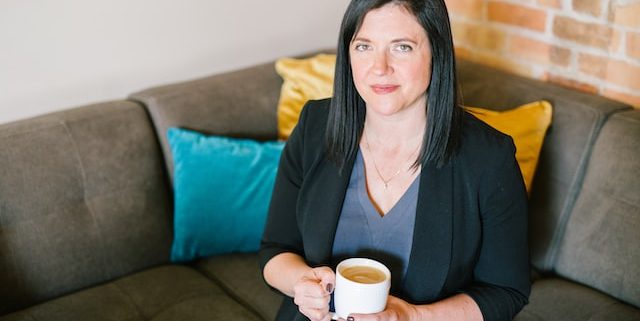How to Detox Your Body from Drugs at Home
Table of Contents
Los Angeles | Orange County | San Diego | San Francisco
Although drug addiction remains at high levels nationally, every day many people decide to quit using drugs. Many others want to stop their drug abuse but fear checking into a rehab facility. Other people struggling with drug addiction may be concerned about the potential dangers and discomforts of drug detox. These are all valid concerns. After all, everyone has heard of the dangers of drug detoxification, but what is it and why is it dangerous, and can drug detox take place in a person’s home?
Can You Safely Detox From Drugs at Home?
Fortunately, you can safely detox from drugs in the comfort and privacy of your own home, with one major caveat: you can detox from drugs at home with professional medical assistance.
Drug detox is the process by which drugs of abuse and their toxic byproducts are purged from an addicted person’s body, allowing them to function without those drugs. However, most addictive substances make significant changes in the ways a person’s major organs and tissues work and react. Addictive drugs cause dependence, and that’s a serious phenomenon in which the addict’s normal, baseline functioning depends on a steady level of their drug of choice in their bodies just to work at all.
That’s why quitting ‘cold turkey’ by abruptly halting one’s intake of addictive drugs is risky, painful, and can be life-threatening. When a person stops taking drugs of abuse suddenly, their body will go into withdrawal, which can be painful and dangerous.
No one should attempt to quit drugs on their own. There are many other safe, secure ways to get clean from drugs, including home detox.
What Does Detox Feel Like?
Detox feels different for everyone, and that includes the levels of discomfort a person feels. When a person stops consuming alcohol or drugs, withdrawal starts. Withdrawal is the most intense phase of detox and can be uncomfortable or painful. Some factors that influence this include the individual’s overall health and the drug or drugs they’ve been using. The biggest factor that influences a person’s detox is whether they’re going through it alone or with professional assistance.
Detoxification is the first step in the substance abuse recovery process. During this process, the body rids itself of toxic substances and the chemical by-products caused by these toxins.
All of the following detox symptoms happen when a person detoxes at home without medical supervision and support. Home detox with medical support is a much less dangerous, far more comfortable process.
Alcohol. Alcohol has one of the most painful detoxes when detox is carried out without medical support. After about 8 hours after the last drink, a person will experience nausea, anxiety, and abdominal pain. Other symptoms include mild hand tremors, heavy sweating, vomiting, loss of appetite, and headaches. About 24 hours after an alcoholic’s last drink, dangerous symptoms become inevitable. These include rapidly increasing heart rate, blood pressure, and temperature.
The final stage of unmanaged alcohol detox includes delirium tremens, a dangerous syndrome that produces hallucinations, agitation, disorientation, and sometimes seizure.
Opioids and opiates. These drugs are highly effective painkillers but produce euphoria when abused and are habit-forming. They include fentanyl, hydrocodone, oxycodone, codeine, morphine, and heroin. Detoxing from opioids without medical support can include some unpleasant symptoms, such as muscle cramps, joint pain, nausea, vomiting, tremors, blood pressure swings, runny eyes, and stomach cramps.
Benzodiazepines. Benzodiazepines (benzos) are prescription-only medications given for the relief of anxiety and anxiety-related disorders. There are a vast number of benzos, but the most commonly prescribed are alprazolam (Xanax), diazepam (Valium), lorazepam (Ativan), triazolam (Halcion), and temazepam (Restoril), and they all require medically supervised detox upon quitting.
Ironically, when a person quits consuming benzos, rebound anxiety becomes intense, causing sweating, heart palpitations, shaking, and a rapid heartbeat. Long-term use of benzodiazepines can cause a person to become psychotic or have seizures and like alcohol, heavy users of benzos should never try to abruptly stop using on their own.
How to Detox Your Body From Drugs at Home
If you’re detoxing from drugs at home, you need the support of in-home medical care. However, you can also establish new habits that will help you recover more rapidly. Eating a healthy, nutrient-dense diet is one of the best habits you can establish.
What Foods Help Flush Out Your System?
Addiction causes severe nutritional deficiencies which can leave a person vulnerable to malnourishment. People who are in detox from drug addiction need to return to good physical and mental health and eating nutrient-rich foods helps speed that process. That’s because addiction wreaks havoc on a person’s tissues and organs and can leave a person malnourished.
These are some of the most effective foods for flushing out and supporting a person’s system during detox.
- Water. Staying hydrated is always important, especially when a person is detoxing from drugs. During detox, people may experience heavy sweating, which can help the body purge itself of toxins, but can be dehydrating. Getting enough water helps prevent that dehydration, but also increases the body’s ability to flush out the harmful biological byproducts of addictive drugs.
- Protein. A person in detox needs protein to help rebuild tissues and organs damaged by addiction. Both meat and plant-based proteins will do the job.
- Fruit. Fruits are a good source of fiber, vitamins, and water. Some of the most effective cleansing fruits include citrus, cantaloupe, peaches, and berries.
- Green leafy vegetables. Spinach and kale are loaded with nutrients, including minerals like potassium and calcium. Sea greens like kelp are loaded with prebiotic fiber that helps regenerate healthy gut bacteria.
- Healthy fats. Some fats are essential for the good health of the nervous system. Omega-3 fatty acids can be found in supplements, but the best way to get them is from fatty cold-water fish, like salmon or mackerel, or plants, such as chia, flaxseed, and walnuts.
Kinkaid Private Nursing Care offers premium in-home services to patients looking for the best and most intensive in-home detox care on the market. We only take on a few clients at a time, so we always provide specialized care to meet the needs of each client. Additionally, not only do we specialize in premium care, but we also practice proper management techniques to ensure your care is organized, efficient, and best for you.
Overall, we create a concierge medical experience for each of our clients. Our approach starts with building relationships with each of our clients and their families; we get to know you in the comfort and privacy of your home to understand your exact needs. We then create a personal care team for you consisting of at least a clinical nurse specialist, clinical case manager, and care coordinator. Our compassionate teams are clinician-led and available to you 24/7 to provide unparalleled service and attention to detail.






